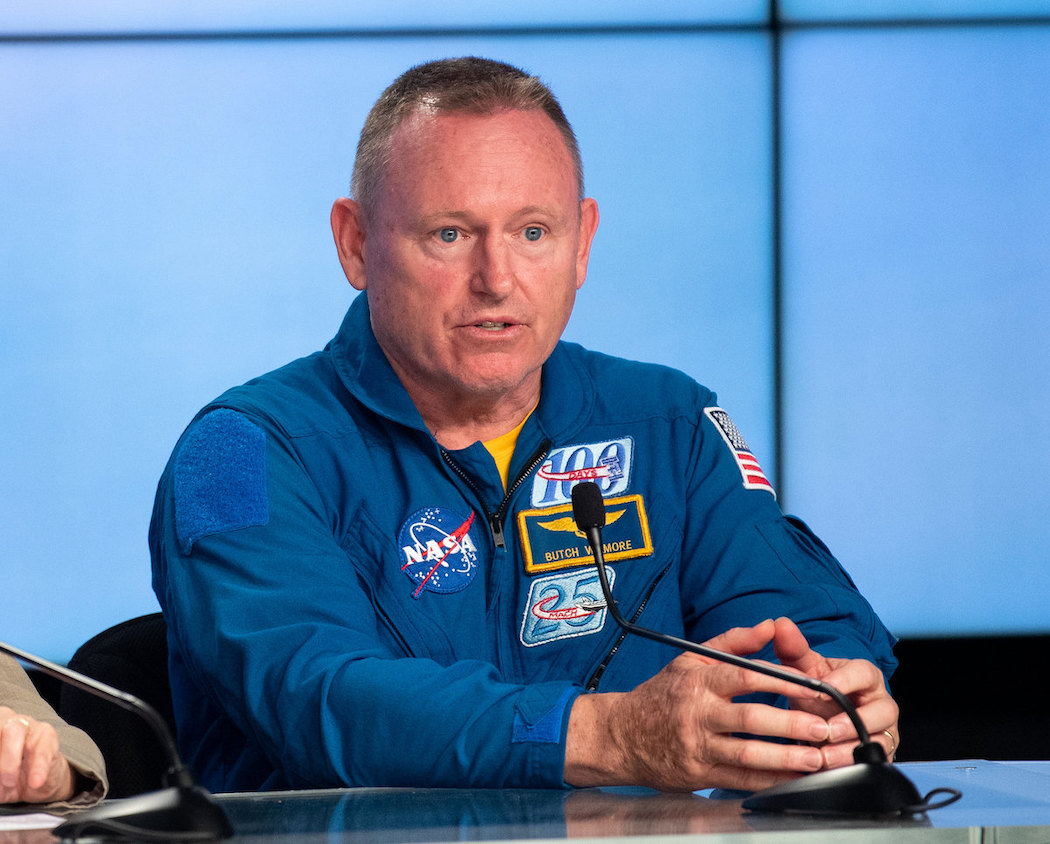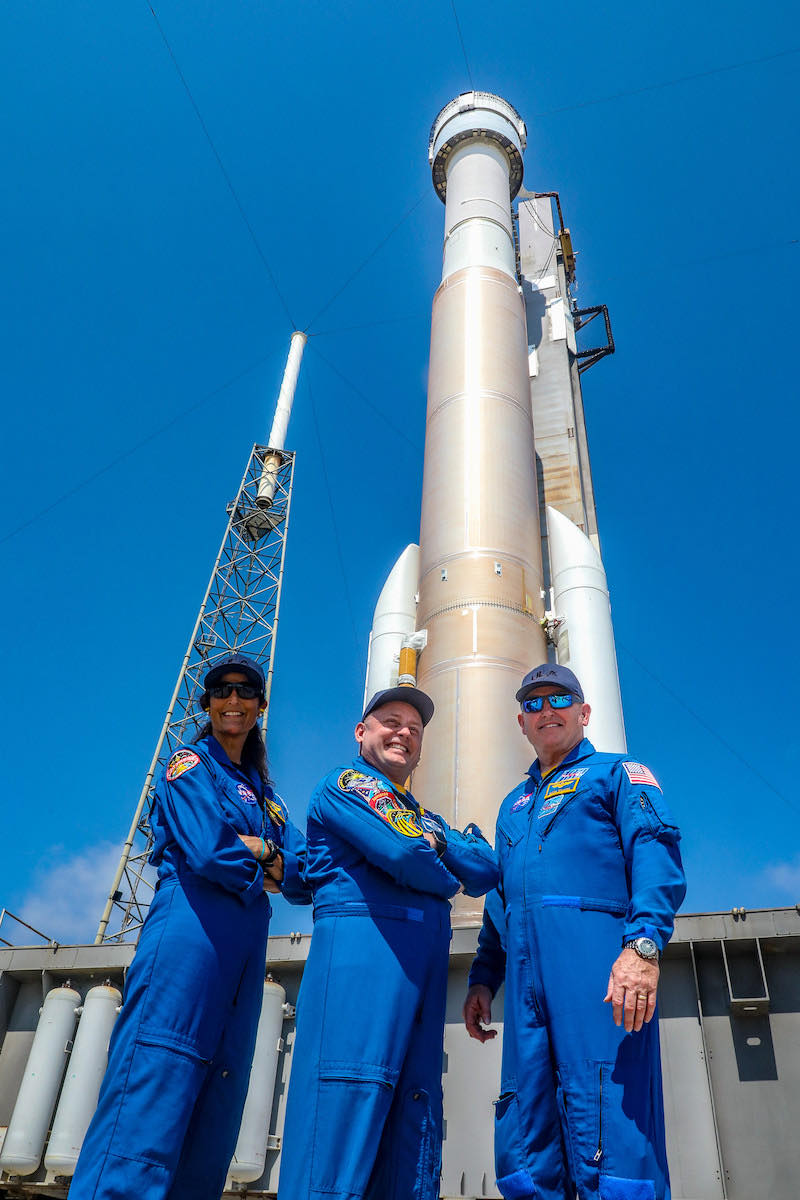
The NASA astronauts training for the first crew missions on Boeing’s Starliner spacecraft will be closely watching each step of the capsule’s unpiloted test flight to the International Space Station, set for blastoff Thursday from Cape Canaveral on an Atlas 5 rocket.
NASA has funneled more than $5 billion into Boeing’s Starliner crew capsule program since 2010, but the spacecraft is running years behind schedule. The mission set for launch Thursday, named Orbital Flight Test-2, is a precursor demonstration flight to prove out key Starliner systems before NASA commits to putting astronauts on the vehicle.
The first Starliner test flight in December 2019 ended prematurely due to software problems, forcing the mission to return to Earth before docking at the space station. Boeing engineers returned a Starliner capsule to the launch pad for a launch attempt last August, but stuck valves in the spacecraft’s propulsion system delayed the OFT-2 mission nine more months until this week.
Read more about the valve problem in our previous story.
“We wouldn’t be here right now if we weren’t confident that this would be a successful mission,” said Butch Wilmore, one of a group of NASA astronauts assigned to the Starliner program. “But there are always unknown unknowns. That’s what historically has always gotten us. It’s those things that we don’t know about and we don’t expect.”
Liftoff of the Starliner spacecraft is scheduled for 6:54:47 p.m. EDT (2254:47 GMT) Thursday on top of a United Launch Alliance Atlas 5 rocket. Assuming an on-time launch Thursday, the Starliner spacecraft will head for docking at the space station around 7:10 p.m. EDT (2310 GMT) Friday.
“We’re ready,” Wilmore told reporters Wednesday. “This spacecraft is ready. These teams are ready. Boeing is ready. ULA is ready. The mission ops folks that will control the spacecraft in space are ready, and we’re excited.”
The Starliner spacecraft set for launch Thursday on the OFT-2 mission won’t have an astronaut crew on-board. An instrumented test dummy named for “Rosie the Riveter” from World War II sits in the commander’s seat on the spacecraft.
Boeing’s Starliner crew capsule is one of two human-rated spaceships NASA selected in 2014 to ferry astronauts to and from the International Space Station. The other spacecraft, SpaceX’s Dragon capsule, began flying astronauts in 2020 and has now launched seven crew missions.
After OFT-2, and following a test flight with astronauts, NASA plans to certify the Starliner spacecraft for regular crew rotation missions to the space station. The agency plans to alternate between the Starliner and Dragon spacecraft, providing “dissimilar redundancy” for crew access to the station.
“We’re going to be focused on this mission, the flight test objectives, as well as getting ready for the flight test objectives for the Crew Flight Test, which has a goal of certification at the end, so that we as NASA can have regularly-scheduled dissimilar redundant flights to the International Space Station,” said Mike Fincke. “So we can go up, one flight with Boeing, one flight with SpaceX.”

The Starliner spacecraft accomplished some test objectives on the abbreviated two-day OFT-1 mission in 2019. The launch aboard an Atlas 5 rocket was successful, and the Starliner proved out its re-entry and landing systems, comprising three main parachutes and airbags to soften the touchdown on the desert floor.
The primary landing site for the OFT-2 mission is at White Sands Space Harbor in New Mexico. It’s the first orbital-class U.S. spacecraft designed to return astronauts under parachutes to a ground landing. SpaceX’s Dragon capsule, like the U.S. crew capsules of the 1960s and 1970s, splashes down in the ocean.
The milestones in between — arriving at and departing from the space station — will be demonstrated for the first time on the OFT-2 mission.
Engineers also want to ensure thermal imaging cameras — part of the Starliner’s Vision-based, Electro-Optical Sensor Tracking Assembly, or VESTA — are operating correctly. The vision-based navigation sensors will help the spaceship automatically dock to the space station.
“We’re going be paying attention on this mission to the artificial vision system called VESTA, which we didn’t get a chance to work or see in action on the (first) Orbital Flight Test. We didn’t get close to the space station,” Fincke said.
The orbital link-up will be the first use of a new docking mechanism called the NASA docking system, a different design than used on SpaceX’s Dragon capsule.
The NASA docking system is designed to be used on multiple types of spacecraft. A similar mechanism will fly on NASA’s Orion spacecraft on missions to the moon.
“We’re going to see how the automated docking system works with the artificial vision system all the way through the NASA docking system. We’re going to follow along with our lucky ISS crewmates who are aboard the space station.”
The Starliner and space station will establish a communications link, allowing the astronauts on the complex to send simple commands to the capsule during the rendezvous and docking. The station astronauts test the command link by signaling Starliner to turn on a docking light and briefly hold position about 820 feet (250 meters) from the outpost.
If needed, the station astronauts could also send a command for Starliner to retreat and fly away from the complex.
Once Starliner is docked at the station, astronauts Kjell Lindgren and Bob Hines will open hatches and float inside the capsule. The station crew will unpack about 500 pounds (227 kilograms) of cargo, assess the condition of the Starliner’s internal cabin, and perform voice checks through the Starliner communications system.
The delays have prompted NASA and Boeing to shuffle Starliner crew assignments. None of the original crew members remain assigned to the first Starliner crew flight.
Wilmore was assigned as commander of the Starliner Crew Flight Test in 2020, replacing Boeing astronaut Chris Ferguson — a former NASA shuttle commander — who withdrew from the mission, citing family reasons. NASA astronaut Eric Boe was replaced by Fincke, a veteran of three space missions, due to a medical issue.
And rookie NASA astronaut Nicole Mann was reassigned to fly on a Dragon mission to the space station later this year, providing her with spaceflight experience sooner than she would receive if she waited for a Starliner flight.
“I don’t feel like we’ve been waiting,” said Wilmore, a veteran space shuttle pilot and space station crew member. “We’ve been busy working.”
NASA astronaut Suni Williams, with 321 days of spaceflight experience, is working on the Starliner program. She was originally assigned as commander of the first operational crew rotation flight on a Starliner spacecraft, following the Crew Flight Test.
But NASA officials said Wednesday the agency has not finalized which of the cadre of Starliner astronauts, including Wilmore, Fincke, and Williams, will actually fly on the CFT mission or the first operational Starliner mission.
NASA’s astronaut office at the Johnson Space Center in Houston will assess crew assignments for the Crew Flight Test and other missions to the space station in 2023, said Kathy Lueders, head of NASA’s space operations division.
“We’ve got to cover all the bases,” Lueders said Wednesday. “We’ve just got to go look at how the schedules lay out and make sure we do the crew assignments with the vehicles, understanding what may be a primary increment crew, what may be a backup, and how that fits in with the training with the different vehicles. But we’ve got to get through this (OFT-2) demo first.”
NASA is assigning crews to fly to the station on SpaceX’s Dragon capsule, and the U.S. space agency hopes to finalize an agreement with Russia’s space agency to continue launching astronauts to the station on Russian Soyuz vehicles on a no-funds-exchanged basis. If the barter agreement is approved, Russian cosmonauts would fly on U.S. crew capsules.
Lueders said the Starliner Crew Flight Test will likely have a duration of about five to seven days. Wilmore said NASA managers adjusted the crew assignments for the Starliner program last year, following the scrubbed launch attempt in August that delayed the program another nine months.
“We know that we are not necessarily assigned for CFT,” Wilmore said. “The powers that be could assign anyone they want. We hope they pick one of us three, or a couple of us three, to go on CFT,” he said referring to himself, Fincke, and Williams.
“We’ve been working the program,” Wilmore said. “But we’ve known since that time we’ve been working as a cadre. This is not news to us.”

Fincke and Williams planned to climb inside the Starliner spacecraft Wednesday night for a crew cabin checkout. The astronauts will verify switch configurations in the Starliner cockpit, and perform voice checks through NASA’s Tracking and Data Relay Satellites.
“We’re going to have a chance to step inside the spacecraft this evening to finish up some comm checks and switches, which I think is tradition for astronauts to help set up the spacecraft before launch,” Fincke said. “And we’ll give Rosie a high five on the way out, because we’re a little jealous of Rosie.”
Boeing technicians will close the hatch to Starliner spacecraft during the countdown Thursday.
The Starliner astronauts will remain in Florida for the launch Thursday evening, then head to Houston to be in mission control for docking at the space station. Then they will travel farther west for the landing in New Mexico, currently slated for no earlier than May 25, the mission takes off Thursday.
“We’re really looking forward to this spacecraft coming home because that’s when the rest of the work will start to happen, and we’ll get ready for the Crew Flight Test,” Williams said.
“One of the things that Rosie doesn’t do is she doesn’t breathe. So we will be the first ones, when we get in it, to be the breathers, the creators of carbon dioxide,” Williams said. “So we want this spacecraft to get back so we can start testing the environmental control system with interaction with people. There’s a lot of work ahead of us before we get to the crewed flight, but we’re chomping at the bit.”
Boeing has built two space-qualified Starliner crew capsules, each designed for up to 10 flights. The spacecraft launching on the OFT-2 mission — on its first flight — will be refurbished for the first operational six-month Starliner crew rotation mission.
The capsule from the OFT-1 mission is being configured for the Crew Flight Test, scheduled for late this year or early next year, pending the outcome of the OFT-2 demo mission.
“We’re ready for this spacecraft to go up to the space station, be really successful, come back, have a nice soft landing, and then we’ll be ready for the work for the Crew Flight Test,” Williams said.
Email the author.
Follow Stephen Clark on Twitter: @StephenClark1.
from Spaceflight Now https://ift.tt/pTADeW2
via World Space Info







0 comments:
Post a Comment